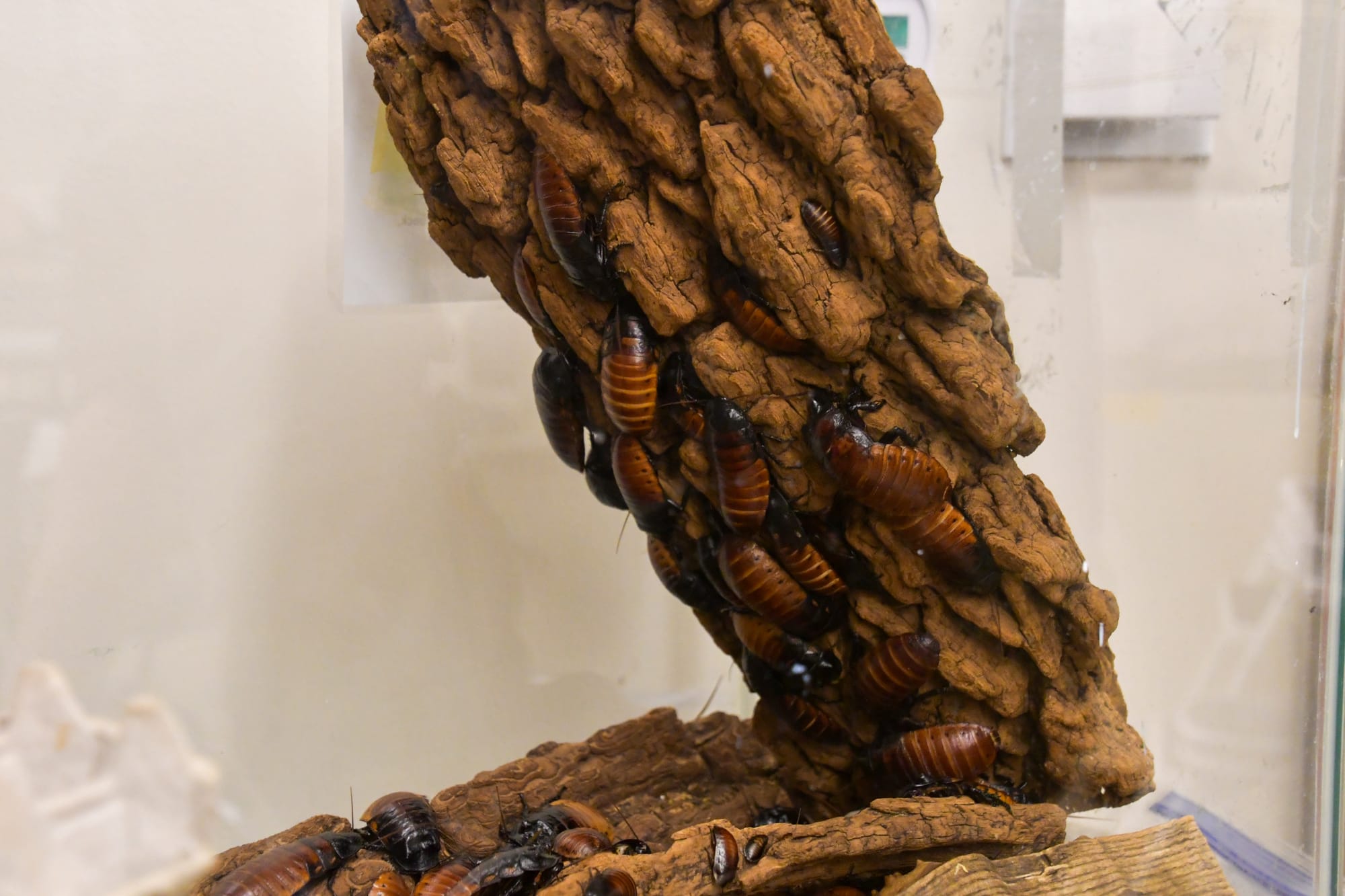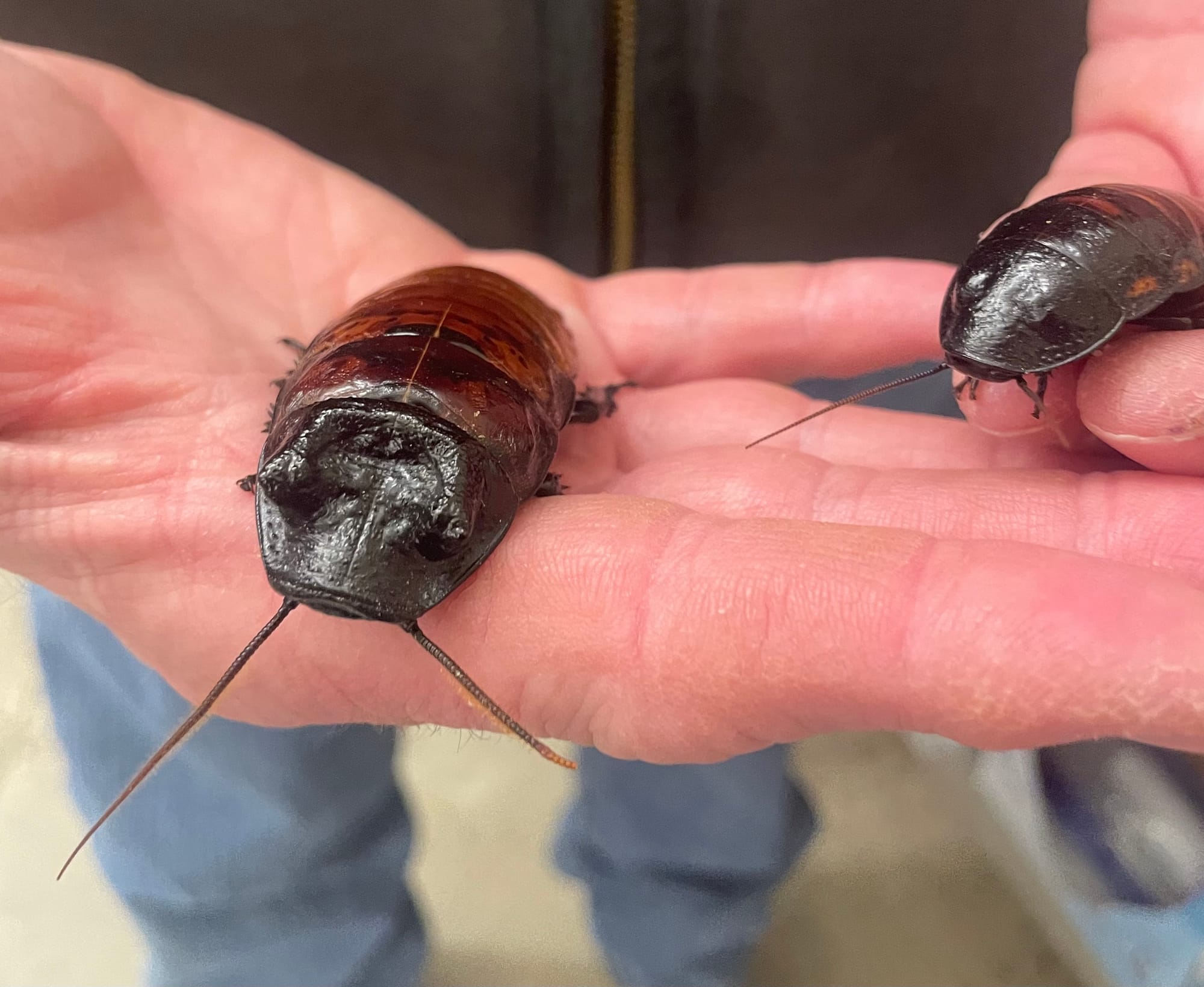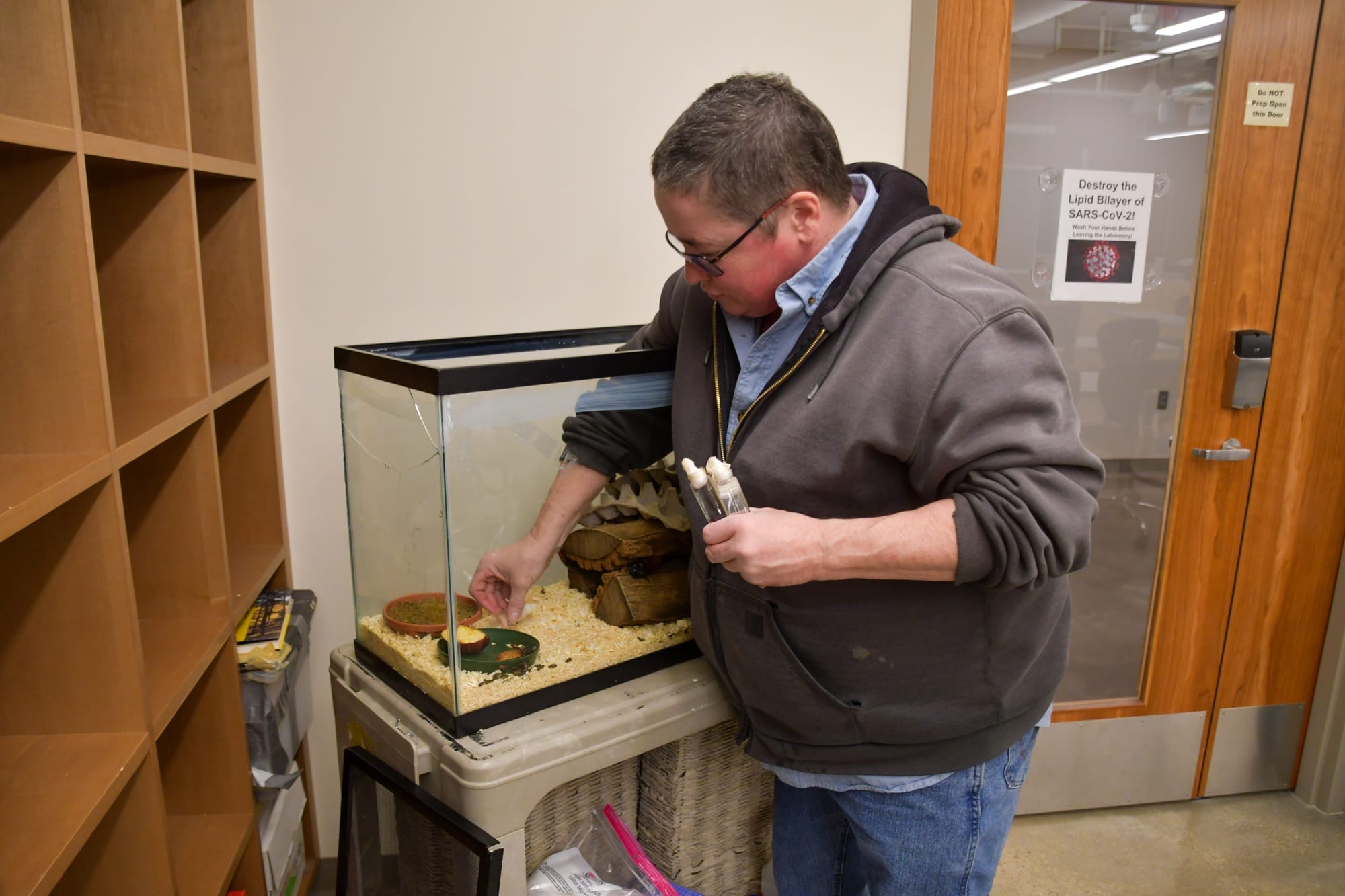Cockroaches educate in FSC

In the basement of the Froiland Science Complex, Madagascar hissing cockroaches creep and crawl, emitting their distinct hiss.
But these roaches aren’t pests — they’re pets.
They live in a 10-gallon tank with wood shavings for bedding and egg cartons stacked on top of ashwood logs.
FSC 119 is actually the least exciting location the hissing cockroaches have been housed in their untold 13-15 year career at Augustana. Born and raised at Augustana, the roaches are remnants of old science classes.
Brenda Rieger, a caretaker in the biology department, ensures the cockroaches are pampered.
Rieger sometimes treats the roaches by pouring water over the cartons; it drips down into the bedding, simulating the wet forest floor of Madagascar, where they are native to. They enjoy crushed rabbit and cat food, which Rieger changes every one to seven days. A fresh apple is placed in their tank every day.
Madagascar hissing cockroaches are detritivores, meaning they consume decaying material called detritus — decaying plant, animal or waste products — and digest it. They sport hardy shells called carpaces, which they shed and grow, similar to snakes shedding their skin. The males have horns like rams for fighting and impressing their female counterparts.
They typically grow to be two to three inches, but Rieger said Augustana once had a rare case.
“We did have one, years ago, that measured up to just under seven inches, not counting the antenna,” Rieger said. “And the students named it Mufasa. Then a little later they called [another roach] Mufasa Jr. He ended up being just under eight inches.”
They don’t have wings like American cockroaches, something biology professor Amy Lewis said she is relieved about.
“I would not say they’re beautiful,” Lewis said. “I mean, ecologically, I recognize their importance to the ecosystem of Madagascar, but personally, I’m not real fond of them. Though I have heard they are friendly, the whole feel of their little legs on your hand is not something I really want to experience.”
Rieger said holding them is similar to the feeling of velcro.
Lewis recalled that years ago, students were given the opportunity to hold the roaches in a photo op fundraiser for Valentine’s Day and Mother’s Day. A photo would be taken of them striking a pose with a roach. The photo would then be turned into a card, that read “I love you more than I love this cockroach.”
Photo ops and fundraisers are just the start of the cockroaches’ resume of work they’ve done for Augustana. Rieger said they are useful advisers for the hiring process for weekend caretakers.



Brenda Rieger shows off the Madagascar hissing cockroaches, which she takes care of. Photos by Ryleigh Tupper and Abigail Smith.
“So whenever we hire somebody to do this position, they have to come through me for an interview, and the first thing I have them do is come down and grab a cockroach,” Rieger said. “And if they come up and start petting it, yeah, you got the job.”
Some suggest the roaches are the original “Augie Doggies.”
“They have personality,” biology professor Carrie Olson-Manning said. “You can tell when they’re mad at you. They can learn to do tasks. They’re kind of just cool little puppy dog cockroaches.”
Like Ace, the current Auggie Doggie, the roaches serve as ambassadors.
“One of the things I love to do with them is take them when we go to outreach stuff and bring them as little ambassador animals,” biology professor Diane Roeder said.
Roeder said she is currently brainstorming ways to implement the roaches in her animal behavior and ecology classes, whether it be through observation or experiment.
“They’re kind of a cool animal just to get people used to the idea that bugs aren’t gross and that you can actually like these weird little things that we’re kind of conditioned to dislike from a very young age,” Roeder said.
Right now, the roaches sit in the background of classes, listening in on lectures rather than being active participants.
Sophomore Trinity Merrill, a secondary education and biology double major, first encountered the roaches in BIOL 180.
“It was really interesting,” Merrill said. “We’d be taking a test or doing a lecture and you’d just hear a little hiss.”
Their hiss is their namesake for a reason: it’s unique to them. While other insects may make similar sounds, the method of making it is different.
While Roeder describes it as air traveling through tubes on the side of their body, Rieger has a much simpler explanation.
“It’s like us humans passing gas,” Rieger said.
Despite their occasional hissing, senior Julia Radtke, a biology and environmental studies double major, said she found them nondisruptive and well behaved when she encountered them in an ornithology class her sophomore year.
“I honestly have never understood the purpose of them other than for education purposes,” Radtke said. “But because they’re not displayed to anybody but such a small subset of students, it makes me wonder if they would be more effective on display in the FSC so that people could learn from and interact with them.”
The roaches originally lived on the second floor of the FSC before being moved to the basement.
“Well, some professors needed that space for other things, so they got moved here,” Rieger said. “But I liked it when these guys were upstairs in front of a window, especially when we get tours with little kids. They just go nuts for cockroaches.”
Other students and faculty have also said the roaches should be moved to a main floor where they would be more visible.
“When you get tourists, especially when they have little kids, we’re planting that seed for the next kid to go into education, in the sciences and all,” Rieger said. “They’re exciting. And you’d be amazed at how many little kids actually get moved to that window on the other side.”
But for now, they continue to live in the basement of the FSC, hissing away in their corner.
“I think one of the things that they’re useful for is visitors coming through to see them,” Lewis said. “And at the moment they are not in a place where they’re visible. So I think we should make them more visible for people who are just coming by. Nobody ever goes down into that corner.”



